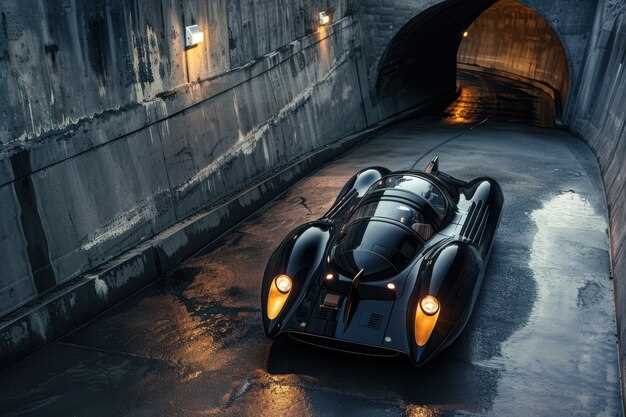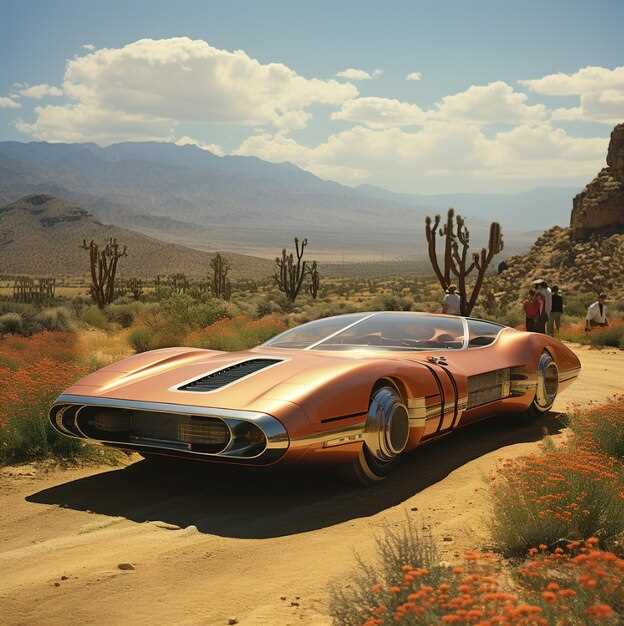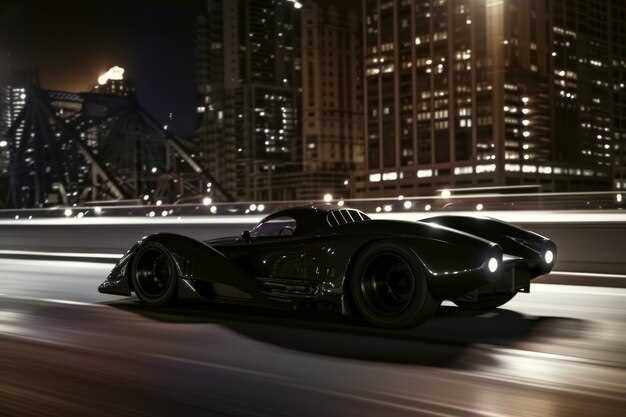
Concept cars represent the pinnacle of automotive design, showcasing the creative vision of manufacturers while pushing the boundaries of technology and aesthetics. These vehicles are not merely modes of transport; they embody dreams and aspirations, reflecting what the industry could achieve in the future. In this article, we delve into the world of iconic concept cars, highlighting their significance and the art of capturing them through stunning photography.
Photography plays a crucial role in bringing these concept cars to life, allowing viewers to appreciate their innovative shapes, striking colors, and intricate details. The right photograph can evoke emotions, provoke thoughts, and ignite imaginations, thus reinforcing the impact of these unique creations. Each click of the shutter serves not just as a documentation of the car, but as an interpretation of its essence, making the vehicle resonate with car enthusiasts and casual observers alike.
As we explore the realm of iconic concept cars, we will showcase a selection of models that have fascinated audiences over the years. From futuristic designs to revolutionary engineering, these cars signify boldness and creativity. Join us as we celebrate the extraordinary intersection of automotive engineering and visual artistry, where the lens captures not just metal and wheels, but the very spirit of innovation.
Exploring the Aesthetics of Design in Concept Cars
Concept cars serve as a canvas where designers can express their creativity and innovation, often pushing the boundaries of automotive aesthetics. These vehicles are not merely functional; they encapsulate the vision of the future while drawing inspiration from the past. The unique designs of concept cars highlight the importance of form, materials, and technology in shaping our perception of mobility.
The aesthetic appeal of concept cars lies in their ability to merge artistic vision with engineering prowess. The sleek lines, bold shapes, and striking colors create a visual language that attracts attention and evokes emotion. This design philosophy not only enhances the car’s appearance but also serves to communicate the brand’s identity and values. In many cases, features that seem radical today may become standard in future consumer vehicles, showcasing how concept cars anticipate and influence market trends.
Reflecting on the past, many iconic concept cars have laid the groundwork for modern automotive design. They often resurrect design elements from previous eras while infusing them with contemporary flair. This nostalgic connection creates a bridge between historical automotive achievements and cutting-edge technology, encouraging a dialogue between tradition and innovation.
Moreover, concept cars facilitate experimentation with sustainable materials and advanced technologies, emphasizing the evolving role of aesthetics in the automotive industry. Designers are increasingly focused on creating environmentally friendly vehicles that do not compromise on style. By integrating renewable materials and energy-efficient technologies, concept cars demonstrate that beauty and sustainability can coexist.
In conclusion, the aesthetics of design in concept cars not only captivate audiences but also play a crucial role in shaping the future of transportation. By merging inspiration from the past with forward-thinking innovations, concept cars continue to redefine what is possible in automotive design, leaving an indelible mark on the industry and consumers alike.
Tech Innovations Reflected in Iconic Automotive Photography

Automotive photography has long been a medium through which the evolution of technology and design is showcased, particularly through concept cars. These vehicles not only represent a vision for the future but also encapsulate the technological advancements of their time. In capturing these stunning designs, photographers play a pivotal role in highlighting the intricate details and innovative features that define the automotive landscape.
The past decades have seen remarkable transformations in vehicle design, driven by technological breakthroughs. From the sleek curves of the 1960s prototypes to the bold and angular forms of modern electric vehicles, each era’s concept cars reveal a narrative of progress. Photographers have the unique ability to emphasize these innovations, using light and perspective to showcase aerodynamic shapes, futuristic materials, and digital interfaces that are often years ahead of their time.
The interplay of light and shadow in automotive photography can vividly illustrate how design and technology converge. Visual storytelling through photography not only captures the aesthetic allure of concept cars but also communicates the underlying technical prowess that brings these visions to life. In doing so, photographers create a lasting legacy of how past innovations inform current and future automotive developments.
As technology continues to advance, the realm of automotive photography will also evolve, incorporating new techniques, such as drone videography and augmented reality. These innovations will further enhance the narrative of how concept vehicles are captured and perceived, allowing audiences to engage with the designs on a deeper level. This ongoing dialogue between technology and artistic expression underscores the vital role that automotive photography plays in documenting the evolution of the industry.
Historical Impact of Concept Cars on Modern Automotive Trends

Concept cars have played a significant role in shaping the automotive landscape over the decades. These innovative vehicles, often designed to showcase new technologies or bold design ideas, emerge from the creative minds of manufacturers and have left a lasting mark on the industry. By examining the past, one can see how these prototypes influenced modern automotive trends in design, technology, and sustainability.
Throughout history, concept cars have often served as a testing ground for revolutionary ideas. For instance, the beloved Ford Mustang, a symbol of American automotive culture, was a product of innovative concept designs in the early 1960s. This vehicle not only set design trends with its sporty aesthetics but also paved the way for the development of the pony car segment, which reshaped consumer expectations about performance and style.
Furthermore, concept vehicles have frequently introduced cutting-edge technologies. The introduction of features such as hybrid engines, advanced safety systems, and autonomous driving capabilities can often be traced back to earlier concept models. The Toyota Prius, for example, emerged from early hybrid concept cars that first appeared in the late 1990s, showcasing the industry’s shift toward environmentally friendly practices.
The impact of concept cars goes beyond aesthetics and technology; they also reflect cultural and societal changes. Concepts often encapsulate current consumer desires, anticipating future needs and preferences. For instance, the rise of electric vehicles has propelled many manufacturers to present electric concept cars, signaling a significant shift in industry focus toward sustainability and energy efficiency.
In conclusion, the historical significance of concept cars in the automotive industry cannot be overstated. By reflecting innovative ideas, adopting new technologies, and responding to societal trends, these vehicles have laid the groundwork for today’s car designs and features. As we continue to evolve in automotive design, the legacy of past concept cars remains an essential part of our journey toward the future.





